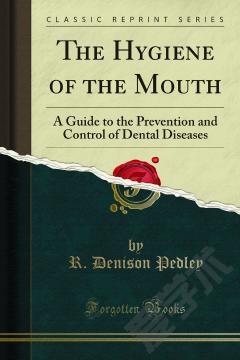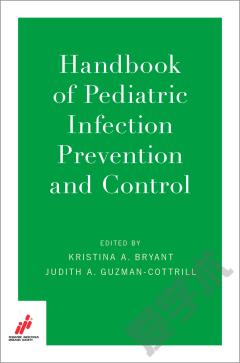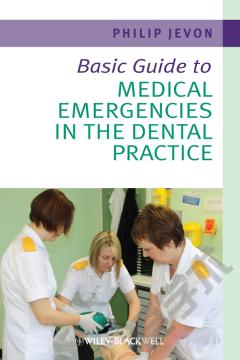Basic Guide to Infection Prevention and Control in Dentistry
Chapter 1: Essentials of control of infection . * Introduction: Why do we need infection control in dentistry?. * Relative risk and risk perception. * Risk assessment and management decision making process. * How to perform a risk assessment. * Hierarchy of risk management control. * Infection control and the law. * Legal Acts under which dental practice is conducted. * Published standards and guidance. * Team approach to prevention of infection. * References and websites. Chapter 2: Communicable diseases in the dental surgery. * How infections are spread. * Reservoirs and Sources of infection. * Routes and transmission of infection. * Infectious diseases by route of infection in the dental surgery. * Direct and indirect contact spread of infection: HSV, MRSA. * Prevention of spread of infection by direct and indirect contact. * Parenteral transmission of infection via the blood stream: HBV, HCV, HIV. * Preventing BBV infection in the occupational setting. * Spread of infection by airborne and respiratory secretions: Tuberculosis, Influenza,. * Emerging and re-emerging pathogens. * Why do infections emerge/re-emerge?. * The impact of emerging infection on dentistry. * Pandemic flu and avian flu. * SARS-CoV. * vCJD. * West Nile Virus. * References and websites. Chapter 3: Occupational Health and immunisation. * Introduction: Building a culture of safety . * Organising staff health in your practice . * Immunisation requirements for dentistry. * Protecting woman of child bearing age. * Who should be immunized against Hepatitis B? . * Health clearance and the consequences of blood borne virus infection. * Health Clearance for registration with the General Dental Council. * References and websites. Chapter 4: Sharp safe working in the dental surgery * Introduction: Why sharps prevention is important * When do sharps injuries occur * Preventable sharps injuries * How to avoid having a sharps injury. * Safe handling of sharps and needles * Use of safety devices * How to avoid sharps injuries - sharp safe disposal * Managing sharps injuries * Occupational health risk assessment for BBV exposure * Management of Hepatitis C exposures * Post exposure prophylaxis (PEP) * Recording of sharps injuries. * Clinical governance and accident risk assessment . * References and websites. Chapter 5: Hand hygiene. * Introduction: Hands as a source of infection * Microbial colonisation of the hands. * Hands as a source of hospital acquired infection. * When to Clean Your Hand * Hand hygiene Technique. * Hand Care and prevention of irritant dermatitis . * References and websites. Chapter 6: Personal protection for prevention of cross infection * Background. * The role of gloves. * Choosing a suitable glove for the task * Managing an allergy to NRL gloves * Masks, Visors and goggles and the protection of mucous membranes and the airway * Types of masks and when to use them * Protection during cardio-pulmonary resuscitation. * Protective eyewear and visors * Tunic/uniforms * Protective barriers- Plastic aprons and surgical gowns * References and websites. Chapter 7: Sterilization and disinfection of dental instruments . * Decontamination cycle. * Why has cleaning become so important? . * Legal requirements and technical standards for decontamination. * Where should sterilization take place? . * Design of Dedicated decontamination units. * Purchasing of dental equipment . * Pre-sterilization cleaning of dental instruments. * Dental instrument sterilization . * Types of water and Steam purity. * How do you know your sterilizer is working?. * Loading the sterilizer. * How to operate the sterilizer. * Storage of wrapped and unwrapped instruments . * Instrument traceability. * Single Use Items * Disinfection of heat sensitive equipment * Disinfection of dental impressions. * References and websites. Chapter 8: Dental surgery design, disinfection and managing aerosols . * Dental surgery design . * Surface Cleaning and Decontamination: General cleaning, Surface cleaning . * Zoning work areas . * Managing Aspirators, Suction apparatus and Spittoons . * Managing Aerosols and Splatter . * Managing Large Blood or Body Fluids Spillages . * -Splashes and spots . * -Small spills . * -Large spills . * References and websites Chapter 9: Dental unit waterlines * What are biofilms?. * Risk to staff and patient health from dental unit water lines. * -Legionellae. * -Pseudomonas. * -Mycobacterium. * -Endotoxin. * Methods to reduce biofilms. * Control of Legionella in dental unit water lines. Chapter 10: Healthcare Waste management . * Legislation on hazardous waste disposal . * Types of waste . * What is hazardous waste? . * Hazardous Waste Regulations and the European Waste Code. * Amalgam waste and installation of amalgam separators . * Segregation and disposal of clinical waste . * Safe handling and storage of clinical and hazardous waste prior to disposal . * Transport of clinical waste . * Completing Consignment Notes for hazardous waste and keeping records . * References and websites . Chapter 11: Transport and postage of diagnostic specimens, impressions and equipment for servicing and repair. * Legal framework . * Collecting specimens . * Transport of specimens to the laboratory . * Sending non-fixed diagnostic specimens by Post . * Transport restrictions . * Fixed pathological specimens . * Transporting Impressions . * Equipment to be sent for service or repair . * References and websites. Chapter 12: Resources . * Table 12.1 Daily infection control clinical pathway. * Table12. 2 Decontamination methods for specific instruments and items of dental equipment. * Table 12.3: Hand and hard surface disinfectants and dental unit waterline biocides. * Further sources of information
{{comment.content}}








 京公网安备 11010802027623号
京公网安备 11010802027623号